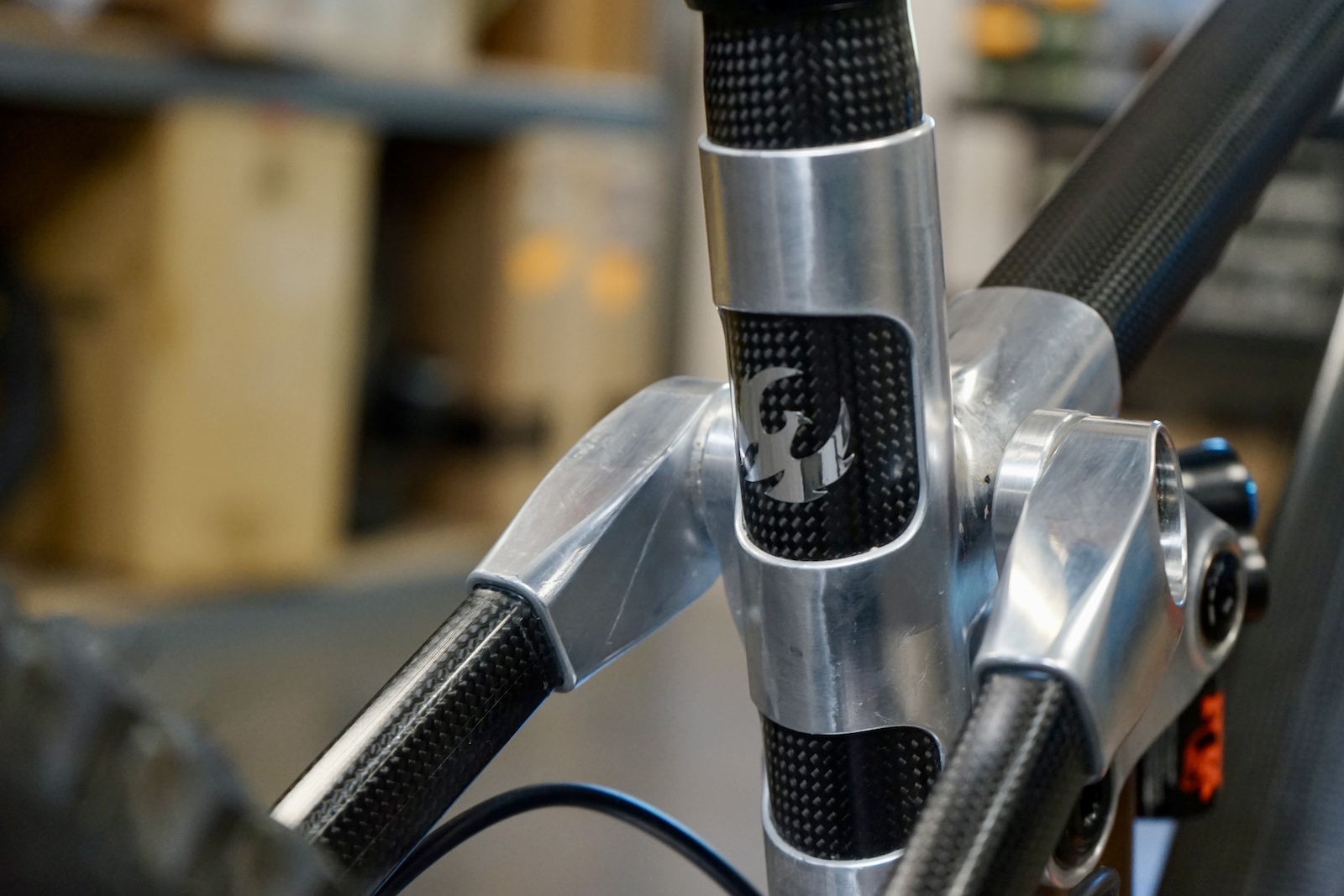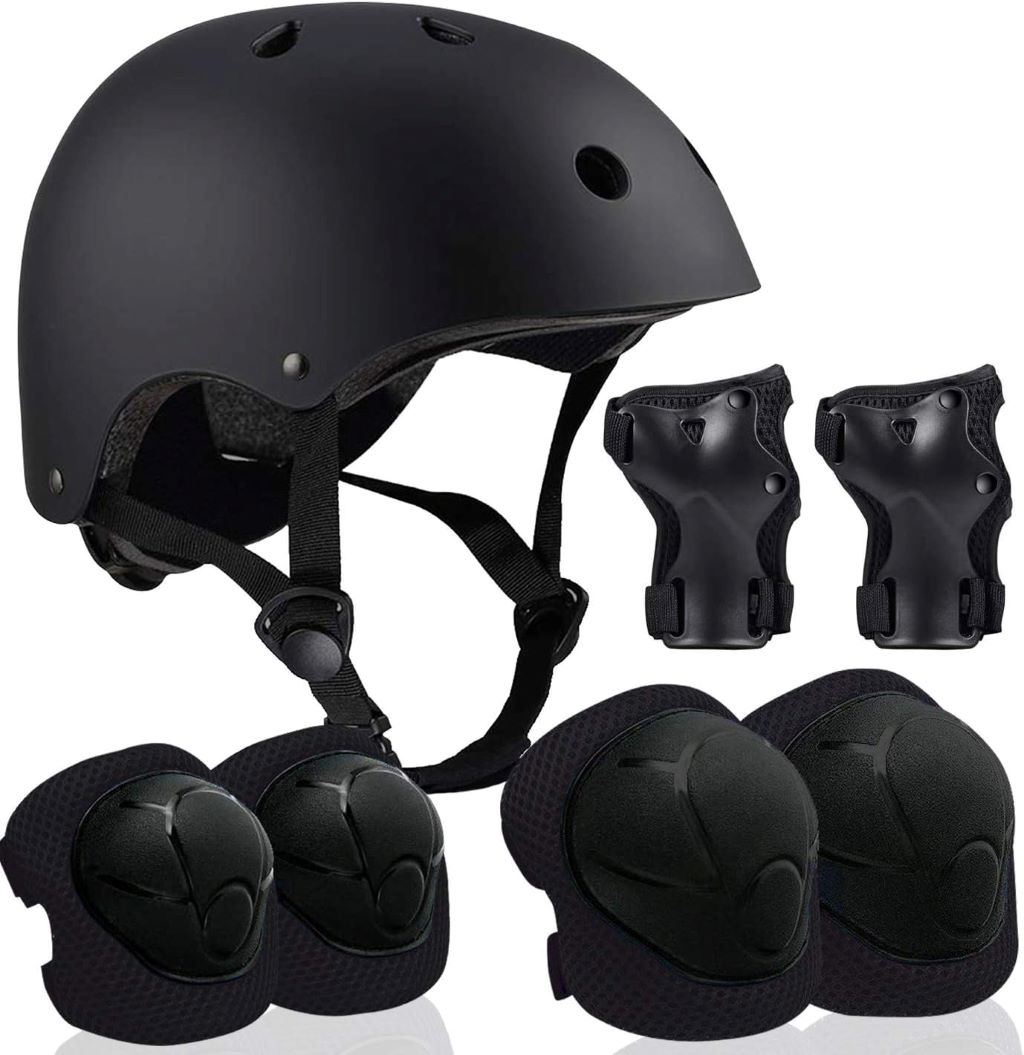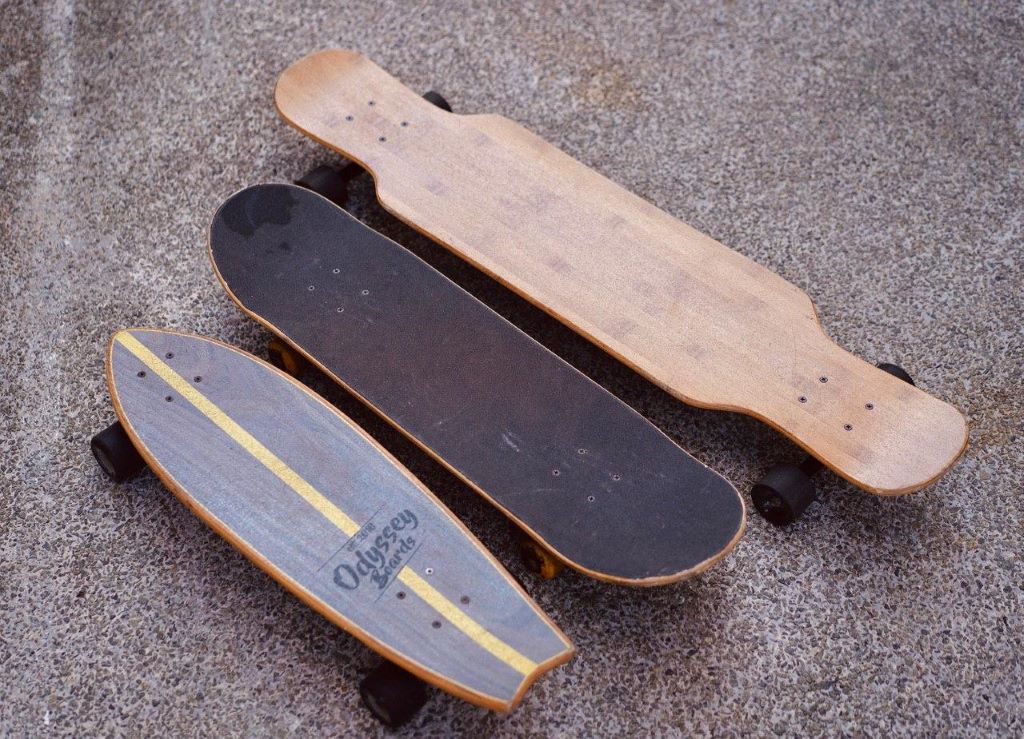Skateboard wheels are typically made of polyurethane, a durable and flexible plastic material. They vary in hardness and size to suit different skating styles.
Delving into the dynamic world of skateboarding, one can’t overlook the significance of the wheels attached to the underside of the deck. These wheels play a crucial role in defining the skateboard’s performance and the rider’s experience, whether cruising down a street or performing tricks at the skatepark.
The material used for skateboard wheels, polyurethane, was a revolutionary upgrade from the steel or clay wheels of the past, offering skaters better grip and a smoother ride. By selecting the appropriate wheel hardness and size, skateboarders can tailor their boards to their personal preferences and the terrains they wish to conquer, ensuring an optimal blend of speed, stability, and maneuverability.
The Science Behind Skateboard Wheels
The science behind skateboard wheels delves into materials engineering, physics, and the quest for the perfect blend of performance and durability. These modest circular components are crucial in skateboarding, determining the speed, grip, and smoothness of the ride. Understanding what skateboard wheels are made of not only enhances the appreciation for this refined sport but also informs the choice for riders seeking to tailor their setup for specific styles and terrains.
The Evolution Of Skateboard Wheel Materials
Skateboard wheels have undergone a remarkable transformation since the inception of the sport. Initially, manufacturers utilized materials such as steel or clay, offering a bumpy and often hazardous experience. As technology advanced, so did the materials used. By the mid-1970s, the introduction of polyurethane wheels revolutionized skateboarding, providing smoother rides and better traction.
| Decade | Material Used | Impact on Skateboarding |
|---|---|---|
| 1950s-60s | Steel, Clay | Limited maneuverability; rough riding experience |
| 1970s | Polyurethane | Revolutionized the sport with improved traction and comfort |
| 1980s-present | Advanced Polyurethane Formulas | Enhanced grip, speed, and durability; specialized wheels for different skateboarding styles and terrains |
Today’s skateboard wheels are composed of complex polyurethane formulas. These formulas are engineered to achieve an optimal balance between hardness and elasticity, often referenced by their durometer rating. A wheel’s durometer can influence everything from how well it grips the pavement to how it performs on various surfaces. Riders tailor their wheel choice based on whether they prefer a softer wheel for traction and smoother rides or a harder wheel for speed and sliding capabilities.
The intricacies of wheel design also extend to shape and size, which affect the contact patch—the wheel surface that makes contact with the ground—and ultimately the skater’s ability to control speed and execute tricks. Wheels also come in different diameters, measured in millimeters, which impact the acceleration and overall agility of the skateboard.
- Small wheels (< 52mm) are great for street skateboarding, offering quick acceleration and better control for technical tricks.
- Medium-sized wheels (52-55mm) offer a versatile option suitable for various skateboarding styles.
- Larger wheels (> 55mm) excel in vert ramps and cruising, providing faster speeds and a smoother roll over rough surfaces.
In addition to size and shape, advances have led to specialized wheels with cores and different profiles, such as the square-edged for grip or rounded for smooth sliding. These innovations are a testament to the ongoing evolution of skateboard wheel technology, each catering to the nuanced preferences and techniques of individual skaters.
Modern Skateboard Wheel Materials
The evolution of skateboard wheels has transitioned through numerous materials, all contributing to the dynamic experience of skateboarding today. With advances in technology and design, modern skateboard wheels cater to various styles and terrains, offering durability, grip, and just the right amount of hardness for every trick in the book. Let’s dive into the composition of the wheels that are an integral part of the skateboarding universe.
Understanding The Composition
Skateboard wheels are primarily made from a material called polyurethane, a versatile synthetic rubber that balances grip and resilience. Unlike the early days of metal or clay wheels, polyurethane provides a smoother ride and can withstand harsh pavement, making it the industry standard since the 1970s.
- Grip: Vital for control, polyurethane wheels have a tackiness that adheres to various surfaces.
- Durability: Engineered to resist wear from grinding and impacts, these wheels are built to last.
- Hardness: Measured by the durometer scale, wheel hardness influences ride feel and functionality. Harder wheels slide more easily, while softer ones absorb more shock.
Professional and casual skateboarders alike trust polyurethane wheels for their consistent performance across skate parks and street terrains. Precision in formulation ensures that every wheel can handle the rigors of flipping, grinding, and high-speed cruising.
While polyurethane reigns supreme, wheel producers often mix in additives to enhance properties like abrasion resistance and rebound. Each manufacturer’s secret formula contributes to the wheel’s unique blend of traits, affecting factors such as speed, longevity, and ride comfort.
Modern technology also incorporates environmentally-friendly alternatives into wheel manufacturing. Companies are continuously seeking ways to reduce their environmental footprint by using recycled materials or developing new composites with a lower ecological impact.
| Property | Description | Impact on Performance |
|---|---|---|
| Durometer | Wheel hardness rating | Affects grip, speed, and slide ability |
| Rebound | Wheel’s ability to maintain shape | Influences speed and shock absorption |
| Abrasion Resistance | Resistance to wear and tear | Contributes to the wheel’s lifespan |
With high performance at its core, the modern skateboard wheel continues to evolve, pushing the boundaries of both functionality and environmental responsibility. As technology progresses, skateboarders can anticipate even more innovative materials that will enhance their ride without compromising on quality.
Reinforcements And Additives
Reinforcements and Additives are the unsung heroes that elevate the performance and durability of skateboard wheels. These crucial components work in tandem to enhance the wheel’s resistance to wear and tear, improve grip on a variety of surfaces, and tweak the overall ride quality to suit different skateboarding styles. By delving into these enhancements, we can truly appreciate the innovative engineering behind the everyday skateboard wheel.
Exploring Different Wheel Durometers
The term ‘durometer’ refers to the hardness rating of skateboard wheels, which plays a pivotal role in defining the riding experience. Ranging from soft, grippy wheels to hard, fast options, the durometer scale is a key factor for skaters to consider. Let’s break down the typical scale:
- 78A to 87A: These soft wheels are ideal for rough terrains, providing a smoother ride and better grip.
- 88A to 95A: Slightly harder, they balance grip with speed, suitable for street and rough surfaces.
- 96A to 99A: A popular choice for all-round street and park skating; they offer a good blend of speed and grip.
- 100A and above The hardest wheels available, perfect for pro skaters looking for speed and slide on smooth surfaces.
By choosing the correct durometer, skaters can optimize their board’s performance to match their skating style and the surfaces they ride on.

Credit: longboardsusa.com
Impact On Performance And Riding Experience
Understanding the composition of skateboard wheels is crucial as it directly influences the board’s responsiveness, speed, and grip on various surfaces. Every aspect, from hardness to size, affects how the skateboard will behave under your feet. This connection between wheel material and skateboarding experience is not only pivotal for riders but also for designers and manufacturers striving to innovate and improve performance.
The material of skateboard wheels can greatly alter your skateboarding experience. Most wheels are made from a type of polyurethane, with various formulas affecting grip, durability, and rebound. The hardness rating, measured on the durometer scale, indicates the level of flexibility and shock absorption. Softer wheels (around 75A to 90A durometer) generally offer a smoother ride on rough terrain. They grip the surface better, making them ideal for street cruising and vert skating. Conversely, harder wheels (about 90A to 101A+) provide faster speeds and are preferred for smoother surfaces and technical tricks. The diameter of the wheels also affects performance – larger wheels roll faster and are suitable for long distances, while smaller wheels offer quicker acceleration and are favored in street and technical skating.
Environmental Impact And Sustainability
The creation and disposal of skateboard wheels impact the environment. Polyurethane is not biodegradable, and its production involves chemicals that can be harmful if not managed properly. As the skateboarding community grows increasingly eco-conscious, companies are seeking alternative materials and more sustainable production processes. Some brands have started crafting wheels using recycled materials to minimize waste. Riders have the power to support ecological efforts by choosing products from companies that prioritize sustainability and by properly recycling their old wheels. Embracing green innovations will not only preserve skate spots for future generations but also promote a healthier planet.
Emerging Eco-friendly Materials
With the rising awareness of sustainability, the skateboard industry is not lagging in contributing to environmental conservation. Emerging eco-friendly materials are revolutionizing the construction of skateboard wheels, offering riders a chance to indulge in their passion without leaving a heavy carbon footprint. Manufacturers are now tapping into innovative resources to craft skateboard wheels that promise not only high performance but also a positive impact on our planet.
Customization And Personalization Options
Eco-conscious boarders value not only sustainability but also individuality. The use of green materials opens a new door to customization and personalization options for skateboard wheels. Materials such as biodegradable urethane and recycled rubber allow for a rich variety of colors and hardness levels, catering to different skateboarding styles and preferences.
- Biodegradable urethane: Customizable in a spectrum of colors.
- Recycled rubber: Offers flexibility in hardness for riding performance.
- Organic colorants: Provide personal flair without harming the environment.
Brands are harnessing these materials to produce unique wheel designs, encouraging skaters to express themselves not only with their tricks but also through their gear. This customization extends from the selection of hues to the incorporation of distinct patterns and even custom graphics imprinted on the wheels.
| Material | Customization Options | Eco-Impact |
|---|---|---|
| Biodegradable Urethane | Color variety, hardness customization | Low |
| Recycled Rubber | Hardness levels, durability adjustments | Medium |
| Organic Colorants | Patterns and graphics implementation | Low |
These advancements not only enhance the rider’s experience but also push forward a larger movement toward sustainable production practices within the skating community.
Frequently Asked Questions On What Are Skateboard Wheels Made Of
What Materials Are Skateboard Wheels Made Of?
Skateboard wheels are commonly made from polyurethane, a type of durable plastic. They can vary in hardness and durability, affecting performance and grip on various surfaces.
How Does Wheel Hardness Affect Skateboarding?
Wheel hardness, measured in a durometer, influences grip and ride smoothness. Harder wheels slide more but are faster, while softer wheels offer more grip and absorb shocks.
Can Skateboard Wheels Wear Out?
Yes, skateboard wheels can wear out over time. They can develop flat spots and lose their shape, impacting ride quality. Frequent skaters may need to replace wheels more often.
Are Larger Skateboard Wheels Faster?
Larger skateboard wheels can achieve higher speeds and roll over obstacles more easily. However, they may be less responsive to tricks compared to smaller wheels.
Conclusion
Understanding skateboard wheel composition enhances your ride and ensures durability. Polyurethane remains the gold standard for smooth glides and grip. Selection hinges on personal preference and skating style. Embrace knowledge of materials for peak performance and informed purchasing decisions. Roll on with confidence.




